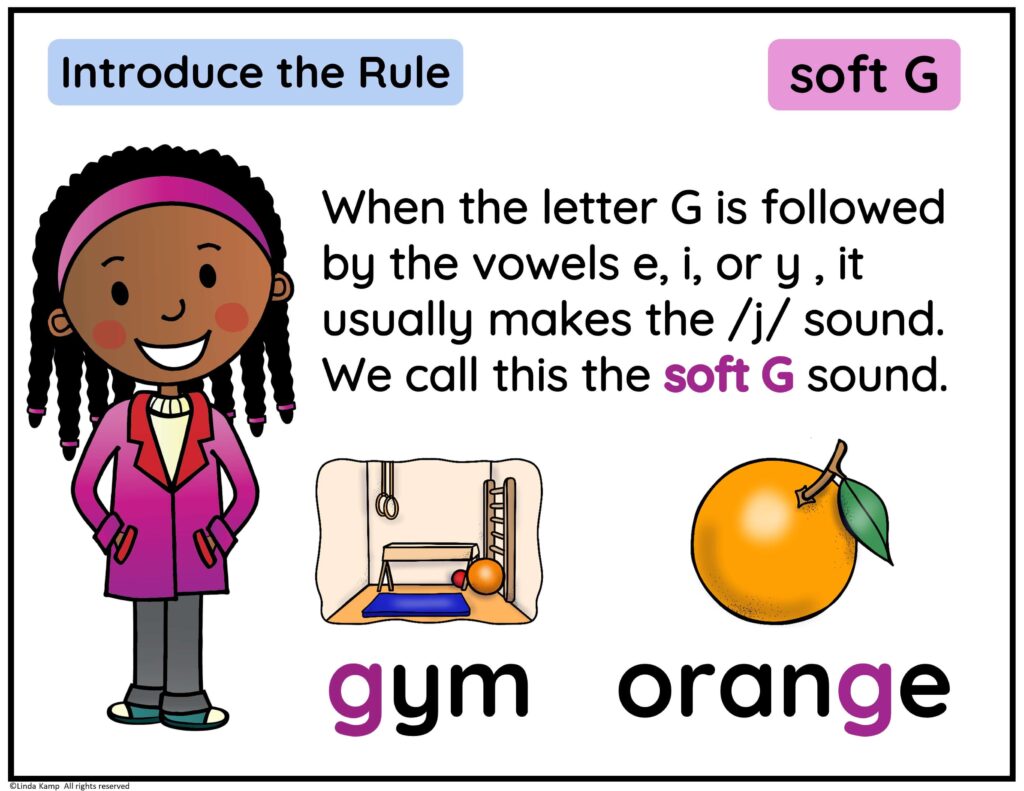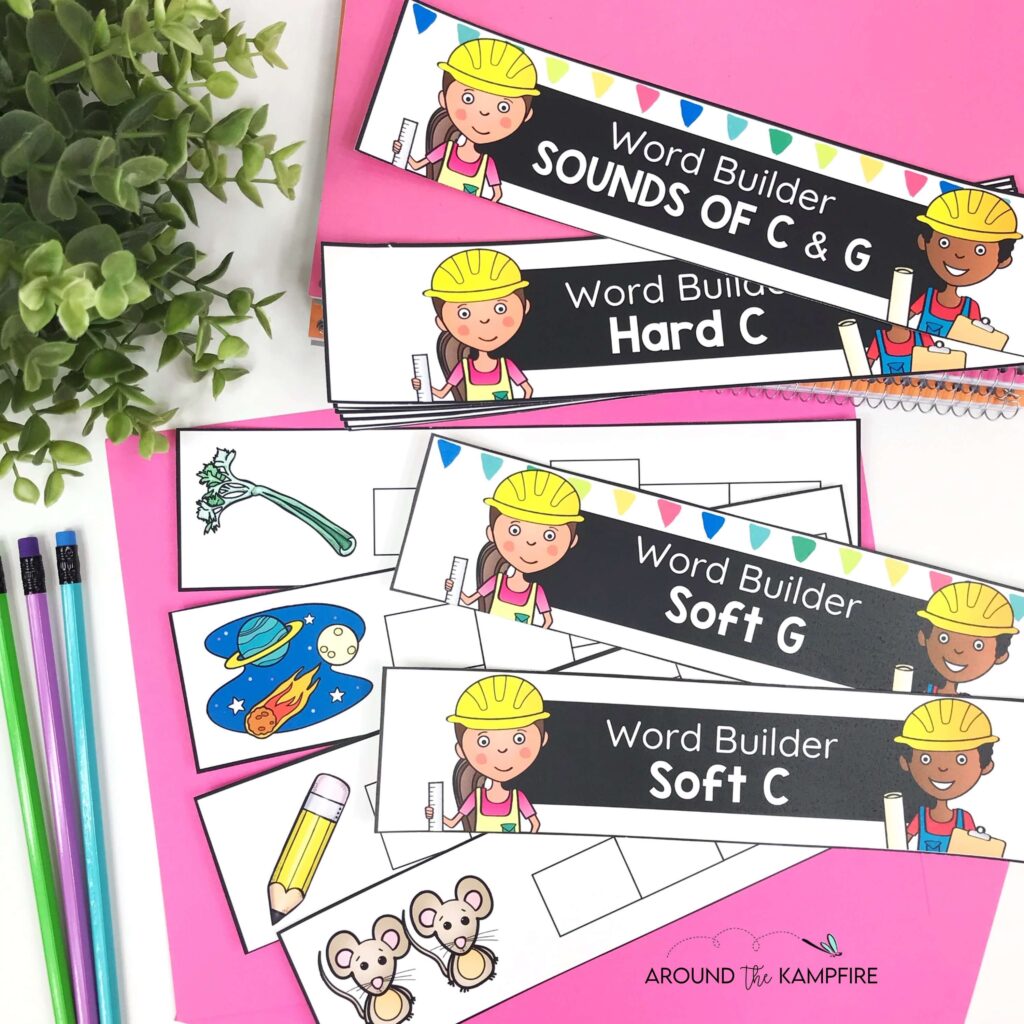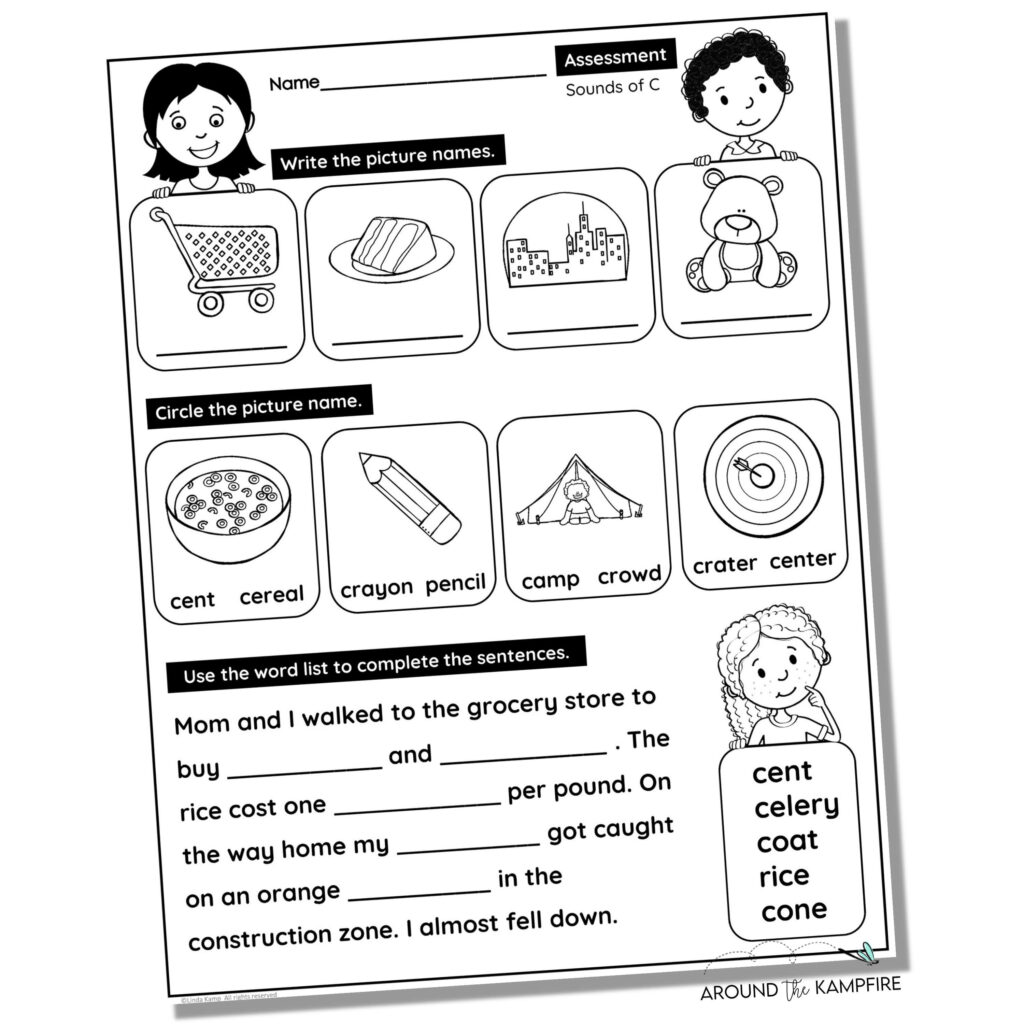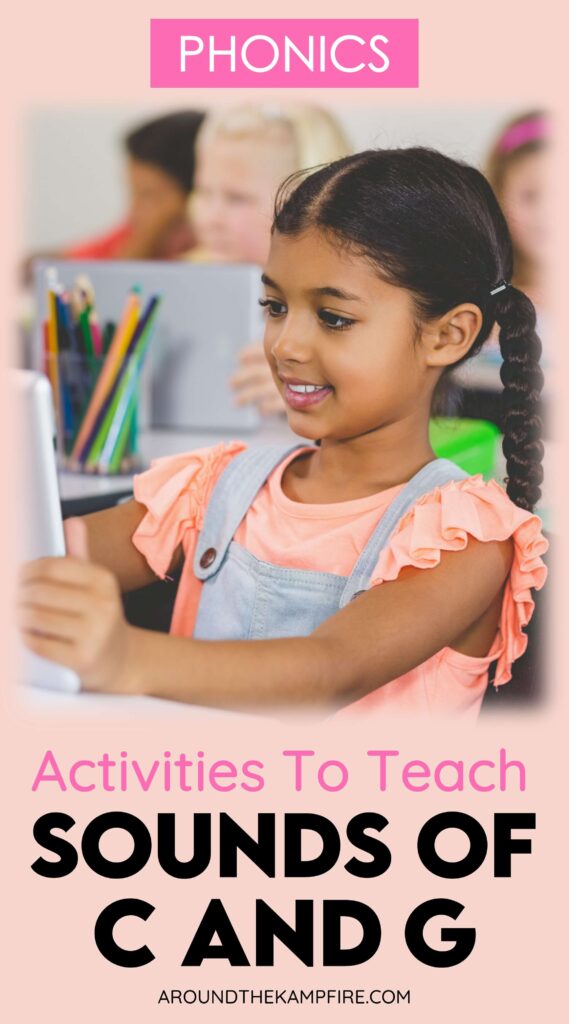Teaching the sounds that c and g make can be a tricky concept for primary students. Most students learn the soft c sound in first grade, and we generally teach the soft g sound during the first quarter of second grade.
The letters C and G can make two different sounds depending on the vowels that follow them in a word.
What is the Soft C sound?

When the vowels e, i, or y directly follow the letter C in a word, the C typically makes an /s/ sound. We call this a soft C sound. Some words with soft C sounds are cereal, city, pencil, and celery.
When the vowels e, i, or y directly follow the letter C in a word, the C typically makes an /s/ sound.
When it’s surrounded by any other letters, C makes its normal /k/ sound. We see this in words like cat, clip, crib, and cup. We call this sound a hard C sound.
What is the Soft G Sound?

Just like the letter C, the letter G also makes two sounds: /g/ or /j/. G changes sounds when it is followed by specific vowels. When the letter G is directly followed by e, i, or y, it usually makes the /j/ sound. This is called a soft G sound, and we see it in words like: gem, gym, orange, and giraffe.
When the letter G is directly followed by e, i, or y, it usually makes the /j/ sound.
When G is followed by o,a,u, l, r it makes its regular /g/ sound. We call this a hard G sound. Words with a hard G sound include gum, bagel, frog, and egg.
How I teach sounds of C and G
When introducing the hard and soft sounds, teach students to look to see what letter follows the letter G or C. This will help them determine whether the C or G is soft or hard.

Activities for Teaching Hard and Soft C and G
These are some of the activities we do to work with the phonics patterns we’re learning each week:
Sound Sorts
Give students plenty of opportunities to practice distinguishing between hard and soft sounds. Use a pocket chart and picture cards or word cards and ask students to sort them by the sounds they hear – hard C, soft C, hard G, and soft G.

Identifying Same Sounds
Help students build auditory discrimination skills by showing them several pictures and writing a C or G word. Ask students to read the word, say the picture names, and listen to find which picture name has the same hard or soft c/g sound as the written word.

These same sound tasks cards are included in a complete Sounds of C & G phonics unit.
Decodable Passages
Use decodable phonics passages or readers to encourage students to sound out words using decoding strategies rather than guessing from pictures or predicting.
Here is a source for decodable passages that target hard/soft C and G . Students locate and highlight words in the pattern, then answer comprehension questions about the text.

Sounds of C and G Videos
There are a few fun and catchy tunes you can listen to with your class to help them learn the rules and see examples of the two sounds of C and G. Try these out with your students and encourage them to sing and dance along!
More videos to teach sounds of C and G:
Word Building
Not only is word building a key component in building phonemic awareness, but it also makes phonics more hands-on with the use of manipulatives. There are a multitude of ways for students to use magnetic letters and letter tiles to build words, substitute sounds, add and delete sounds and more.
You can easily make your own magnetic letter tiles, letter cubes, or letter cards without having to spend much money.

Hard and Soft C and G Worksheets
While worksheets aren’t always the best way students learn, they do give students additional practice. Students need to be able to write and spell words in the hard and soft C & G patterns, but we can make practice worksheets more fun by adding novelty. Here are easy ideas and fun ways to make worksheets more engaging that you may not have thought of!
Center Activities
I find it’s best to stick to a weekly phonics routine so students know what’s expected and can get started right away. I like to provide a variety of different C and G sounds games and centers and change them to match our target skill.
Using consistent and familiar activities will make your phonics centers easier to manage. A familiar, weekly phonics routine, with similar phonics tasks each week, prevents you from spending valuable time giving directions and allows for student independence during center time.
Quick Phonics Assessments

Quick, one-page assessments included in my phonics units, give you progress-at-a-glance for the patterns students are working on.
Get Sounds of C and G Lesson Plans
If you don’t have time to create your own phonics practice pages, assessments, center activities, and teaching PowerPoints my Sounds of C and G phonics unit includes detailed lesson plans with everything you need to teach, practice, and assess this foundational phonics skill.
See all of my phonics teaching resources and centers here.
Don’t forget to pin this post to come back to when you teach this skill!








Leave a Comment